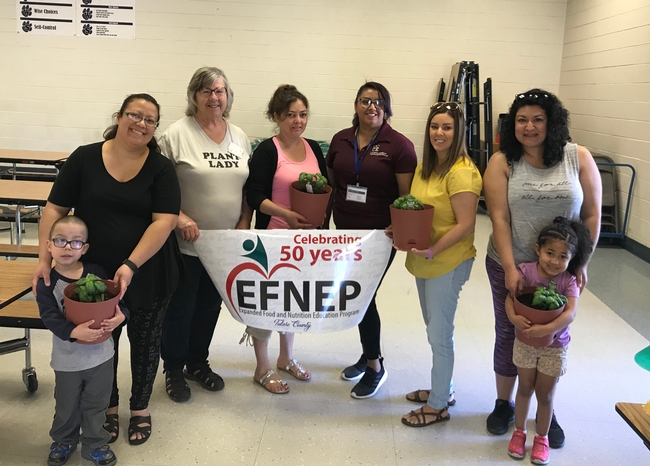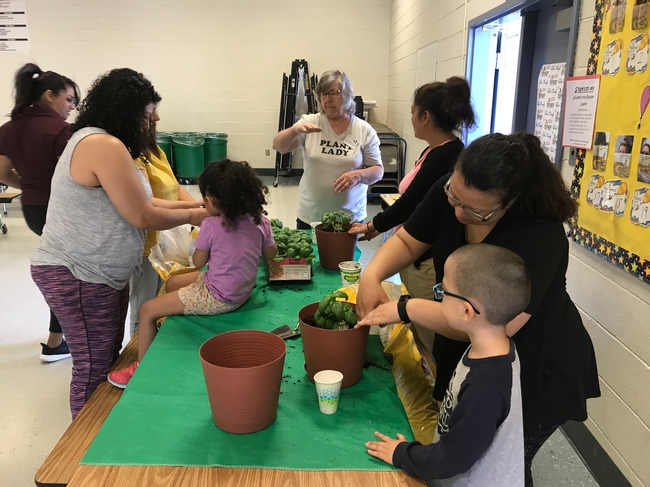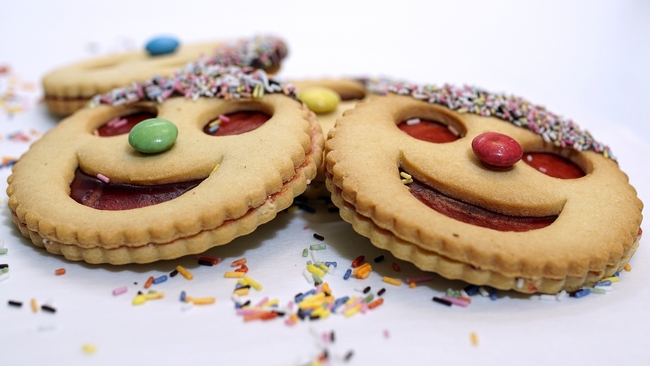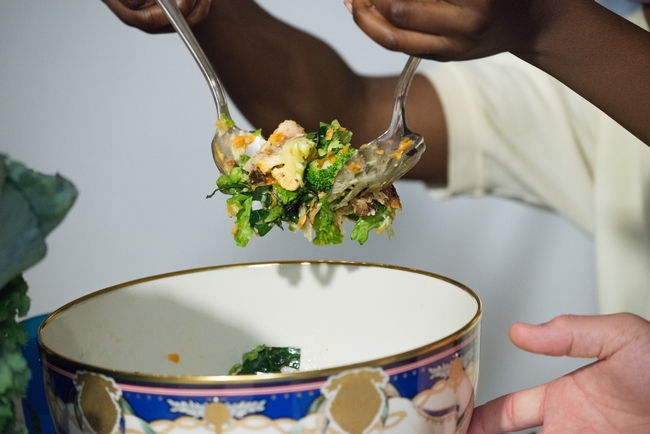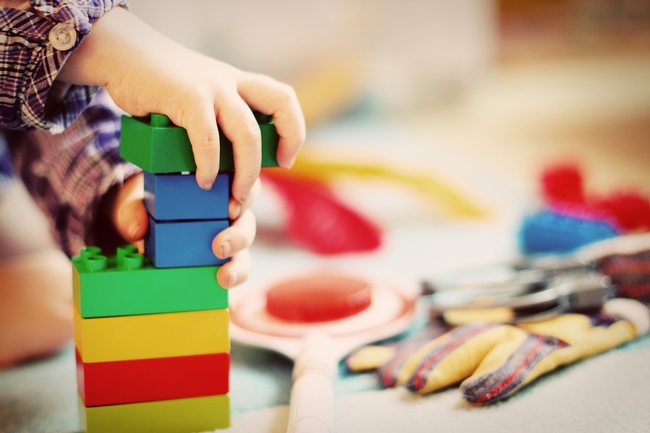- (Focus Area) Health
- Author: Deepa Srivastava
UCCE in Kings County leverages community partnerships to increase preschoolers awareness about healthy foods
Early childhood is critical to the development of lifelong healthy living. With this intent, UCCE, in partnership with the Department of Hospitality Management at West Hills Community College-Lemoore and preschools located at the college campus, embraced a collaborative approach to promote healthy eating by helping preschoolers learn about and taste Go Glow Grow foods.
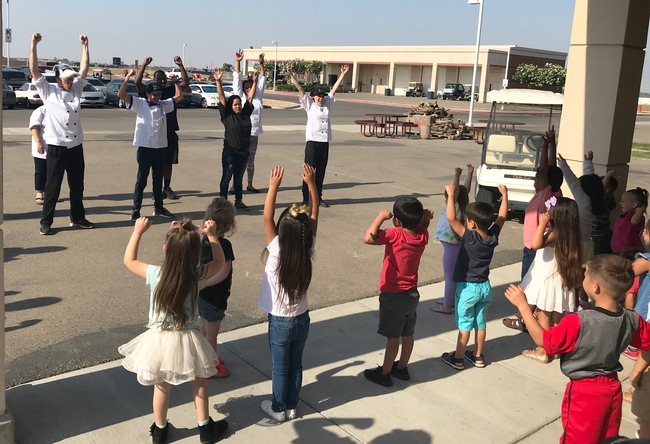
Together, we can make a difference!
An innovative and collaborative integration of research and practice brought diverse stakeholders together.
- Deepa Srivastava, UCCE Advisor Nutrition, Family & Consumer Sciences from Tulare/Kings initiated the needs assessment, monitored evaluation process, and conducted focus groups.
- Susan Lafferty, Nutrition Educator of Kings County UC CalFresh nutrition education program implemented the Go Glow Grow curriculum.
- Nancy Jeffcoach, Site Supervisor of West Hills Child Development Center, Lemoore planned the timeline for preschoolers who received the curriculum.
- Christian Raia, Program Director /Coordinator Hotel Restaurant Casino Management Faculty-West Hills College planned and supported the culinary students' implementation of food demonstrations, taste tests, and recipe sharing. The reinforcement of Go Glow Grow MyPlate food group concepts was integrated into students' capstone project.
During April and May 2019, collaborative partnership efforts captivated preschoolers' attention with key MyPlate messages and taste tests. Susan Lafferty led six weeks of the Go Glow Grow curricula with 72 preschoolers. Twelve community college students from the culinary department shared recipes and conducted food demonstrations and taste tests. Nine preschool teachers consistently supported the program. Preschoolers received a graduation certificate and a chefs hat upon completing the program.
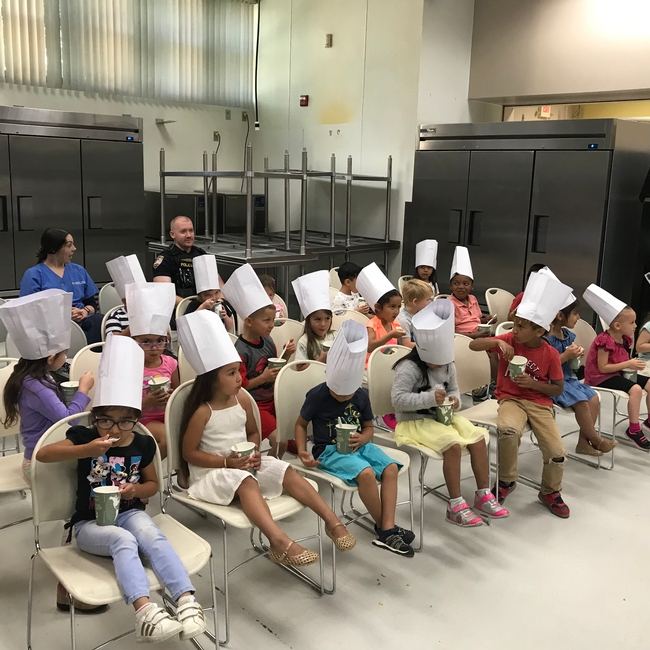
“Glow foods make my hair grow, eyes sparkle, and skin soft."
Initial success stories, lesson observations, and activities indicated increased knowledge of preschoolers about MyPlate food groups and willingness to try foods from all food groups. A majority of preschoolers responded to the importance of eating Go Glow Grow food.
Taking home key messages
It also seems the preschoolers are taking key messages home. One preschool teacher mom shared this story:
So [preschooler name] is eating her dinner and she looks up at me and says, "ya know, chicken isn't on my plate."
"Um, yes it is, it's right there..."
"No," she says,"it's not anywhere on My Plate!"
"Oh, like the healthy choices My Plate? Yes it is, it's protein. I think it's red."
"Red is fruit momma, it's a glow food!"
So at this point I pull up the graphic. She is right–that it would be purple as a protein. She informs me that I should study it. But she'll help me and show me where the vegetables are as she loudly chews a cucumber in my ear. She's been telling me which foods have which vitamins and bringing the conversation to the table at every meal.
"You guys are doing amazing things. I see it in my program and now I get to see it in my child. So thank you!"
Positive learning experiences result from meaningful interaction
Upon completion of the program, two focus groups were conducted to understand the program impact at the individual and environmental levels of the social-ecological model. It was encouraging to note the response from participating community college students about their learning experiences and the changes that they have observed for themselves and the preschoolers as a result of this program.
A majority of the students indicated that they “loved” Go Glow Grow concepts of MyPlate and the meaningful “interaction” with the preschoolers.
A sustainable foundation is established
Overall, “mutually reinforcing goals, collective impact, commitment, trust, consistency, strong partnerships and communication, curriculum, evaluation tools”- all factored in to keep the momentum for the community partners.
What began as a needs assessment to examine the nutrition practices of early childhood education settings, ended on a promising note to continue promoting the health and well-being of young children. Indeed, a strong and sustainable foundation is established to carry forward UC Agriculture and Natural Resources' strategic initiative of healthy families and communities.
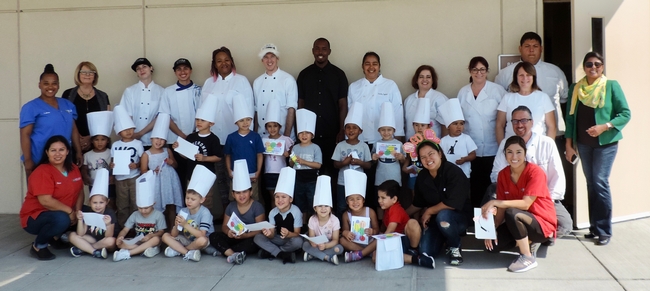
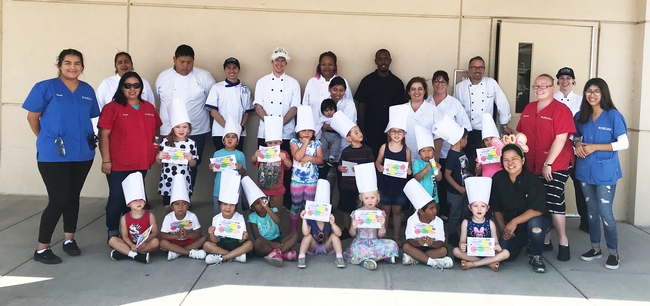
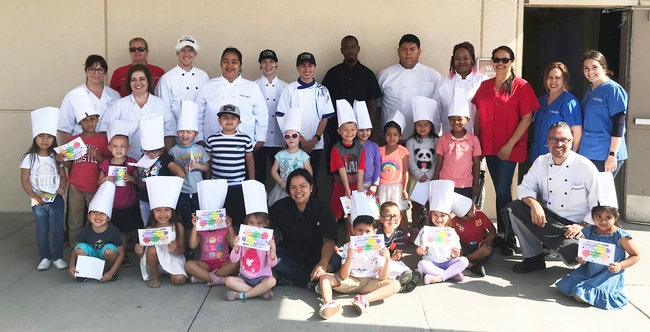
- Author: Deepa Srivastava
- Editor: Suzanne Morikawa
EFNEP, the Expanded Food and Nutrition Education Program, partnered with UC Master Gardeners in Tulare County to celebrate EFNEP's 50th Anniversary! The UC Master Gardeners provided a one-hour workshop about container gardening for parents of young children. The parents had just completed the EFNEP Eat Smart•Be Active series at Conyer Elementary in Visalia, Calif.
Mariana Lopez, a UC nutrition educator who speaks English and Spanish, led the EFNEP classes from Jan. 30 to March 27, 2019. Seven of the 10 participants completed the series and graduated. The graduates expressed interest in participating in a gardening workshop. Deepa Srivastava, the UC Cooperative Extension nutrition, family and consumer sciences advisor, reached out to Susan Gillison, the UC Master Gardener coordinator, to initiate this collaboration and Mariana coordinated the gardening workshop.
UC Master Gardeners provided full support
The Master Gardeners provided the materials such as soil, pots, basil seedlings and cilantro seeds. The guidance and knowledge received from Dana Young, the Master Gardener volunteer – also known as The Plant Lady – was very helpful! Parents participated with their children in the hands-on container gardening activity. Dana explained that container, or pot gardening, is the practice of growing plants in containers instead of planting in the ground. Herbs and other edible plants can be grown in containers. The participants also learned about healthy soil and gutter gardening.
Parents enthusiastically shared their experience from participating in this hands-on activity:
“Knowledge about gutter gardening was very helpful!”
“It was exciting to be a part of this activity, my child loved it!”
Indeed, the EFNEP and Master Gardener collaboration in Tulare County was successful. The Site Coordinator of Conyer Elementary expressed interest in holding additional meaningful workshops like these for parents during the school year!
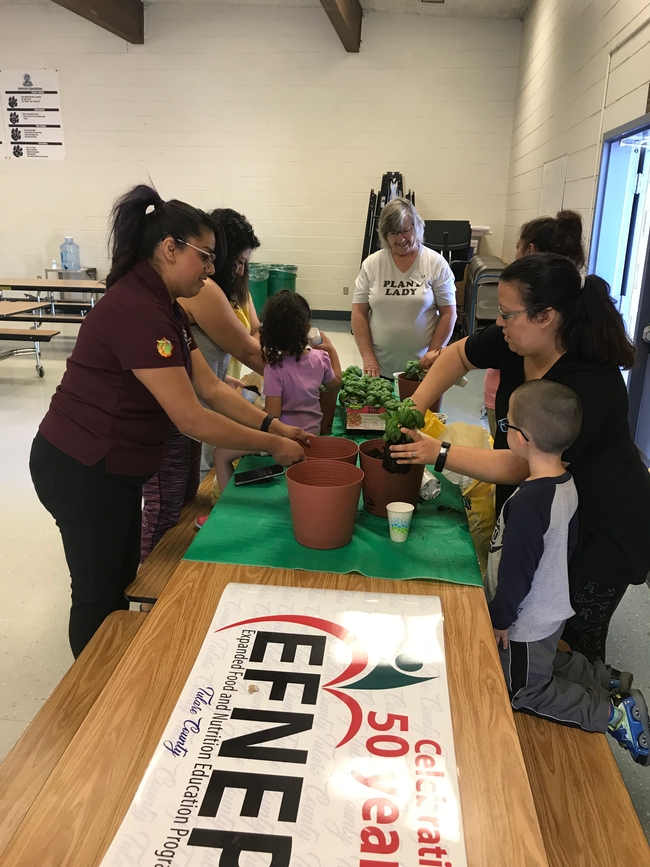
X
- Author: Norma De la Vega
- Adapted into English by: Jeannette E. Warnert
The end-of-year holidays are a perfect time to enjoy family, gifts and food. It's time to laugh, relax, cook and eat the most delicious meals of the year.
Unfortunately, it can also be a time when excess can put your health and finances at risk, leaving you to begin the New Year with debt, stress and anxiety.
Experts with UC Cooperative Extension have practical advice to make the festivities joyful and worry-free. They also provide some simple guidelines to select toys for children with maximum fun and minimum heartache.
Don't go into debt
Shopping is a temptation all year, but during the holidays even conservative shoppers can be seduced into spending too much. In the United States, the average shopper will spend $885 on gifts, according to Gallup.com. For that spending, UCCE experts recommend shoppers avoid making purchases on credit.
Patti Wooten Swanson, UCCE nutrition, family and consumer sciences advisor in San Diego County, believes using a credit cards encourages over spending. Before you know it, the debt will begin to acquire interest, the interest continues to grow, and the purchases become substantially more expensive.
She suggests shoppers establish a budget, think of the people you would like to give gifts, and determine the amount of cash available for each of them before heading to the store.
“Organizing the expenses is very important for people at all income levels to learn to manage money, reach financial security and use their economic resources to acquire what is really important for you and your children,” Wooten Swanson said.
Following are recommendations for using a credit card:
- Don't use a credit card to make a purchase if you don't have the funds to pay it off at that moment.
- Understand that the actual cost of interest can vary greatly, from zero percent for a limited time up to 30 percent. Pay all charges at the end of the month to avoid paying interest.
- Avoid paying only the minimum payment on your credit card, as creditors may then consider you “high risk” and increase your interest rate.
- An advantage of paying with a credit card is the security of not having to take cash with you shopping.
Remember, spreading holiday cheer doesn't require spending a lot of money. There are also treasured gifts, such as those that are homemade, that will persist in the recipient's memory because they come from the heart.
Eat everything, but in moderation
The holidays hail the arrival of many rich dishes, such as tamales, roasted meats and an array of chocolates, cookies and desserts. Many of these foods require a great deal of preparation and are only available at this time of year, increasing the temptation to eat them. But, they often contain a significant amount of salt, sugar and fat.
“Everybody knows we eat because we have to nourish our bodies, but we also eat for pleasure, to socialize or because we enjoy the flavors of the foods,” said Lorrene Ritchie, director of the UC Agriculture and Natural Resources' Nutrition Policy Institute. “Sometimes what we like eating isn't the most healthy, and it's important to know that you don't have to feel guilty and renounce all foods that are unhealthy. Just be sure that most of the time you and your children opt for healthy foods.”
Following are a few suggestions from UC ANR experts can make the holiday eating and playing healthier and safer.
Drink water
During the festivities, we can allow ourselves to enjoy a sugary drink now and then, but always drink water to quench thirst.
“To work off one can of soda, you'll have to walk a few hours. Calories don't burn off very rapidly with physical activity,” Ritchie said.
Salads at your parties
Salads are very healthy, and the more colorful, the better. Each vegetable of a different color contains different nutrients.
“Latinos love fruit. I believe we eat enough fruits,” said Margarita Ramirez Schwartz, UC Cooperative Extension nutrition educator in San Diego County. “But we don't consume as much vegetables, and above all, raw salads.”
At your parties, always serve salads. If you don't have time for salad preparation, opt for convenience products like packaged vegetables and greens that are pre-washed, pre-cut and ready to serve.
Dance
A family dance creates timeless memories. There is no grandparent that can decline when a granddaughter wants to dance. Among Latinos, dancing is part of the culture. Be it salsa, samba, huapango or merengue, any rhythm will help you stop eating, have fun and improve your health.
“The key is to realize that exercise is as important for your health as eating and sleeping,” Ramirez-Schwarz said. “We all want to live for many years, and spend those years enjoying good health. No one likes to be sick and physical activity is part of illness prevention.”
Toys
The joy of Christmas and Epiphany for children often takes the form of new toys, which entertain and spark imagination and creativity. Parents want their children to be happy and have the opportunity to learn by playing with safe toys. Alas, it doesn't always work out this way.
In 2016, there were 240,000 injuries related to toys, according to the Consumer Product Safety Commission. Toys usually appear harmless, but children with injuries caused by toys arrive at hospitals every year. WATCH (World Against Toys Causing Harm, Inc.) is a non-profit organization that monitors toy safety and compiles a list of harmful toys. For example, the leash on a wooden dog can cause strangulation. The lighted eyes that detach easily from a stuffed unicorn can choke a youngster. A toy rifle that shoots plastic disks can hit another child in the eye.
UC ANR experts recommend that you choose toys that will hold a child's interest, taking into account the child's age, fine motor skills and preferences. A toy that is too advanced or too simple could be used in the wrong manner and cause accidents. Think big when choosing toys. Each small piece must be larger than the child's mouth to prevent harm.
- Carefully examine the toys made of painted metal. There are some made overseas that can contain high levels of lead.
- Make sure the toy doesn't have small parts on which a child can choke or that can put younger children in the household at risk.
- Avoid toys that are old and used because they may not comply with current security rules or they may be worn out, break easily and be a danger to children.
- Look for toys with a solid structure. You do not want to give a toy to children that can break easily.
- To prevent cuts, check to be sure the toy doesn't have sharp points or edges.
- Avoid toys that make a lot of noise that could damage the child's hearing.
- Be sure activity books and art supplies are nontoxic.
- Give the toy with batteries, if needed, so that the children won't be frustrated when they receive the gift.
Finally, remember that there is no better gift to children than your time. The toy will be forgotten shortly, but the time that children spend with their families will create life-long memories.
Read the Spanish version of this story.

